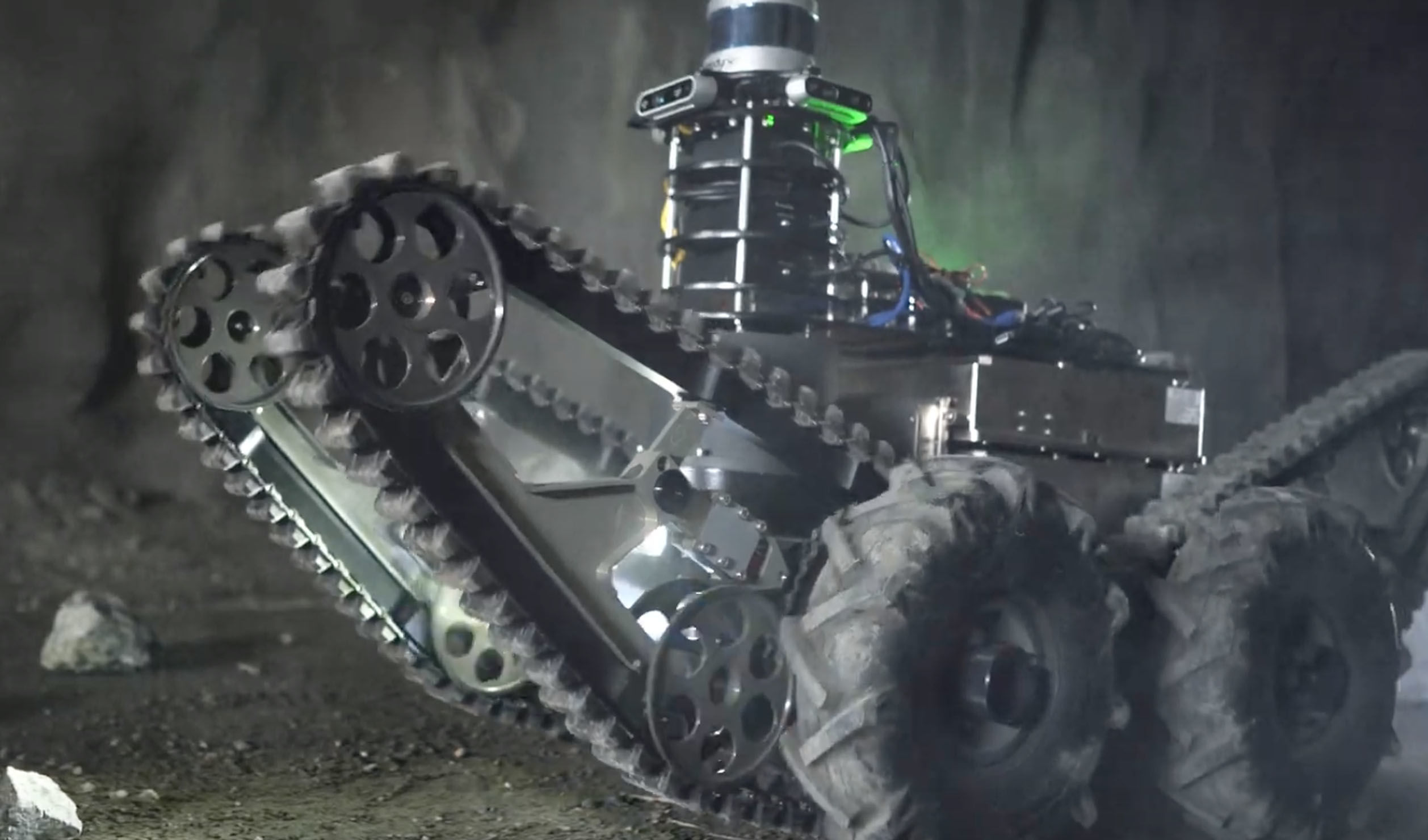Create a free profile to get unlimited access to exclusive videos, sweepstakes, and more!
NASA is on a quest to win the ultimate robotic underground explorer competition

Though robots creeping and crawling through subterranean passages sounds like a test run for horror movie animatronics, it’s actually happening, and leveling up the bot game both on and off Earth.
Every species of robot you can think of — drones, wheeled rovers, climbers — is now competing in the first phase of DARPA’s four-part Subterranean Challenge Systems Competition through Thursday. NASA’s Jet Propulsion Laboratory (JPL) is one of 11 teams entering the competition, which is being held (appropriately enough) in some of Pittsburgh’s abandoned mine tunnels. This undertaking will help upgrade tech for both military and first responders on terra firma as well as NASA missions that will explore new frontiers in space.
"By investing in this competition, we are investing in our future," said Leon Alkalai, manager of the JPL Office of Strategic Planning. "There's no doubt that the next grand challenge for JPL and for NASA is to do more subsurface exploration."
CoSTAR (Collaborative SubTerranean Autonomous Resilient Robots) is the result of the JPL team joining forces with Caltech, MIT, and KAIST (Korea Advanced Institute of Science and Technology). The 60-person team has entered several mechanical creatures in Phase 1 of the competition, the Tunnel Circuit. These tunnels are only accessible to robots; no humans allowed!
Each type of bot in CoSTAR is specialized to perform certain tasks, such as navigating via AI, mapping passages, or unearthing objects such as cell phones and mannequins that have been hidden in the underground labyrinth. Winning this phase, the Tunnel Circuit, means mapping the most objects within about 16 feet of their location. CoSTAR’s next-generation machines will be competing against everything from flying drones, to tank-like things on wheels, to contraptions that scale anything in their way with pinball-flipper treads.
This isn’t the first time JPL has entered a DARPA robotics competition. Its Robosimian, which took fifth place in 2015 and was originally designed for disaster relief, is now being adapted to explore frozen moons, like Titan and Europa, that could possibly host life.
"The big question for NASA is: Is there life beyond Earth? One of the main places to find answers to that question is subsurface environments because they are some of the most pristine locations, shielded from ultraviolet radiation and cosmic rays," said CoSTAR principal investigator Ali Agha. "If there is life in the solar system, these are the most likely places to harbor it."
Phase 2 of this epic competition will happen next February with the Urban Circuit. This is when CoSTAR’s visionary Drivocopter will enter the game. Drivocopter is a drone-rover hybrid that can both tackle rough terrain and fly up to and right through areas impossible to reach otherwise. The last two phases will be the Cave Circuit next August, and the Systems Final in August 2021. Whoever wins will receive $2 million in funding from DARPA.
Will the winner create something that discovers alien life on a distant moon (if it exists)? Who knows, but this might make you want to get the NASA smartphone app to keep an eyeball on updates.
(via NASA JPL)


























